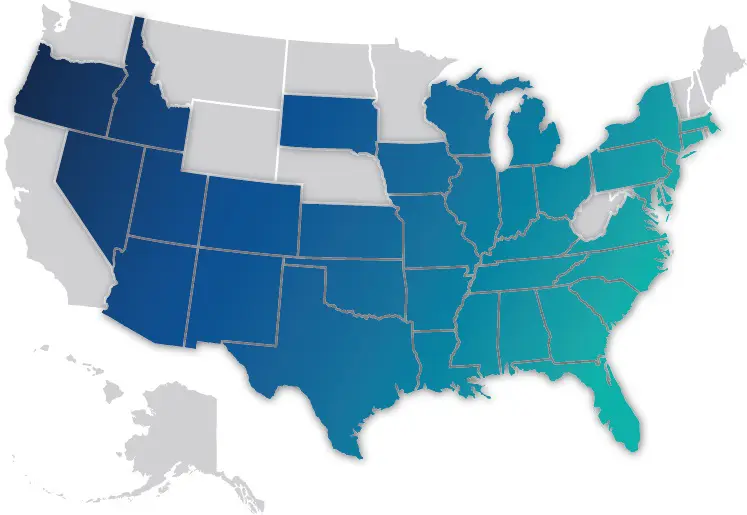
Map displays the locations of ORAU’s consortium members.
Our company is called Oak Ridge Associated Universities (ORAU) because ORAU is a 501c3 nonprofit corporation and government contractor with access to a consortium of more than 160 member universities. University partnerships play a big role in what we do. We work with subject matter experts at academic institutions across the country. Together, we find solutions for the pressing challenges that U.S. leaders seek to solve. In other words, through partnerships with our university members, ORAU works with federal agencies, national labs and private industry to advance scientific research and other critical missions.
A recent example is a project with the U.S. Centers for Disease Control and Prevention (CDC) where ORAU experts in public health and healthcare collaborated with researchers from Arizona State University (ASU) in an effort focused on wastewater surveillance. The team was able to track communicable diseases like influenza in certain environments by monitoring the wastewater. It was a situation where all players benefitted: ORAU and ASU received funding for their contributions to the work and both organizations were able to demonstrate their capabilities for a federal agency partner. Meanwhile, the CDC gained valuable insight into tracking communicable disease.
Member institutions
When the idea for ORAU was born in 1946, it started with 14 founding university members.

ORAU partnered with Arizona State University to conduct surveillance on wastewater in an effort to track communicable diseases like influenza.
Charter members:
University of Alabama
Auburn University
Catholic University of America
Duke University
Emory University
Georgia Institute of Technology
University of Kentucky
Louisiana State University
University of North Carolina
University of Tennessee
University of Texas at Austin
Tulane University
Vanderbilt University
University of Virginia
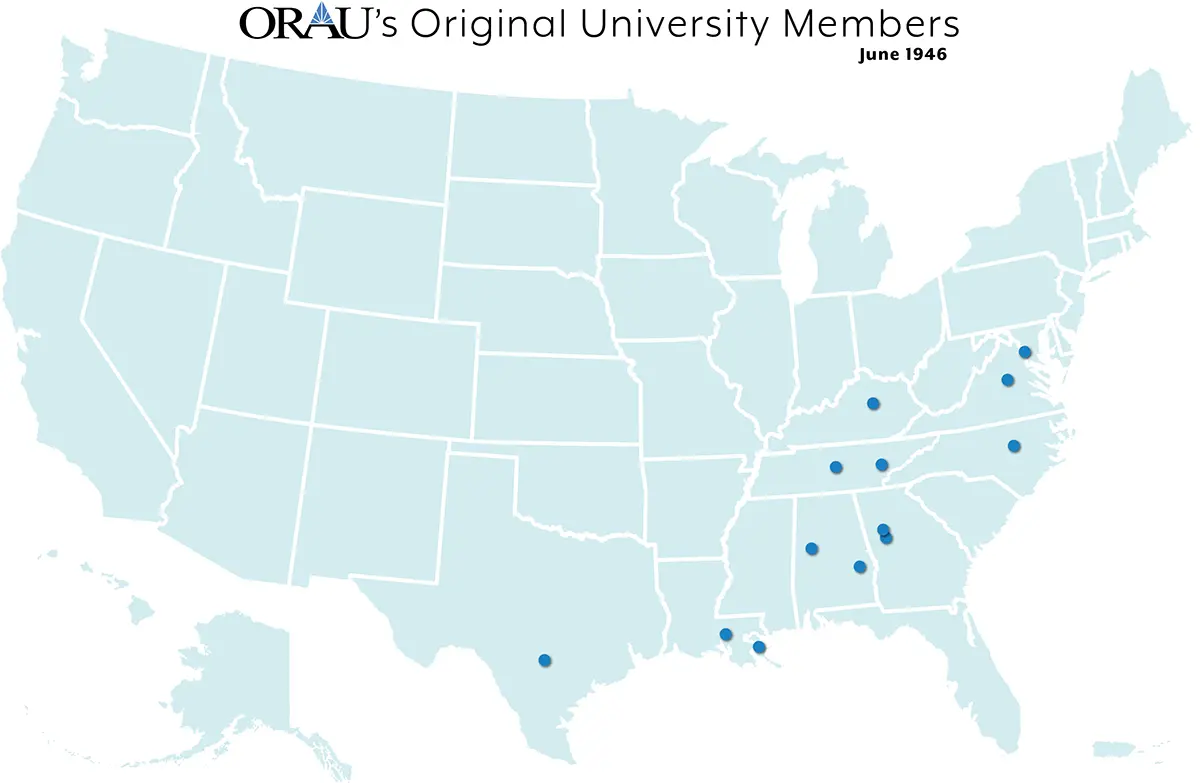
Map displays locations of ORAU’s founding university members.
As you can see, all members were originally concentrated in the South. There’s a reason for that; you can read more about our history in this blog. For the purpose of this post, it’s important to understand that when ORAU was established in 1946 as the Oak Ridge Institute for Nuclear Studies (ORINS), it was one of the first university-based, science-related corporate management groups. ORINS began with a clear mandate: train university researchers in the use of radioisotopes and serve as a liaison between the universities. ORINS would remain the name of the organization until 1966 when the Board of Directors decided to rename the institution “Oak Ridge Associated Universities” to better reflect the role that member universities played with our growing organization. Regardless of the name change, ORAU’s mission generally remained the same as the programs it managed evolved over time. The concept of our mission caught on, and ORAU experienced rapid growth, adding consortium members throughout our seven-decades of operation. We grew from 14 universities in seven states (and the District of Columbia) to our current membership in 2024 of 158 institutions in 37 states (and the District of Columbia). That’s a lot more scientific research collaborating we’re able to accomplish!
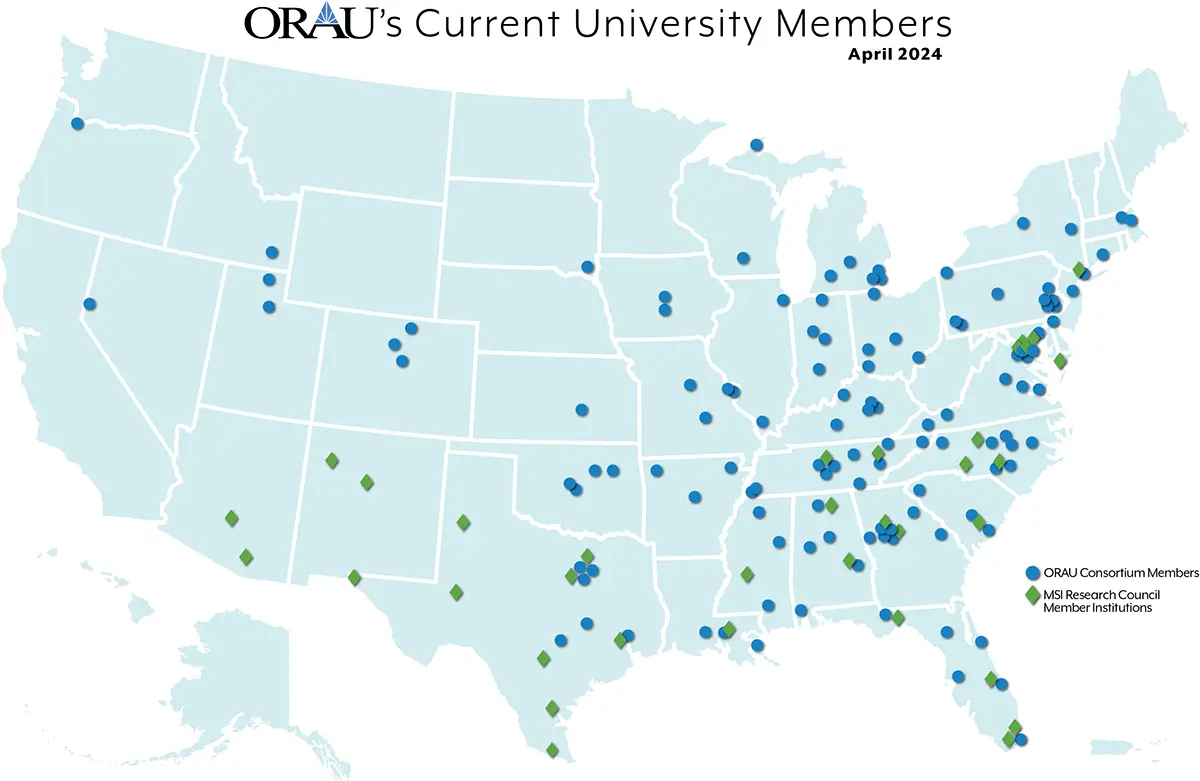
ORAU’s consortium now has 160 member universities.
Being a member of our consortium includes access to unique vehicles for funding research, professional growth and development opportunities as well as fruitful collaborations, including the ORAU-Directed Research and Development Program and ORAU’s Ralph E. Powe Junior Faculty Enhancement Awards Program.
Applying the partnership to the real world
To give you a better idea of what I’m talking about, I’ll share a project that one of our Powe Junior Faculty winners is conducting: Zoonotic researcher, Daniel Becker, Ph.D., used his Powe Award winnings ($10,000) to microchip Mexican free-tailed bats. As an assistant professor in the School of Biological Sciences at the University of Oklahoma, Becker is studying pathogens bats in the Americas might carry that are a possible threat to human or wildlife health. Specifically, Becker is tracking Mexican free-tailed bats that migrate between Oklahoma and Mexico and characterizing the pathogens they carry and their immune systems.
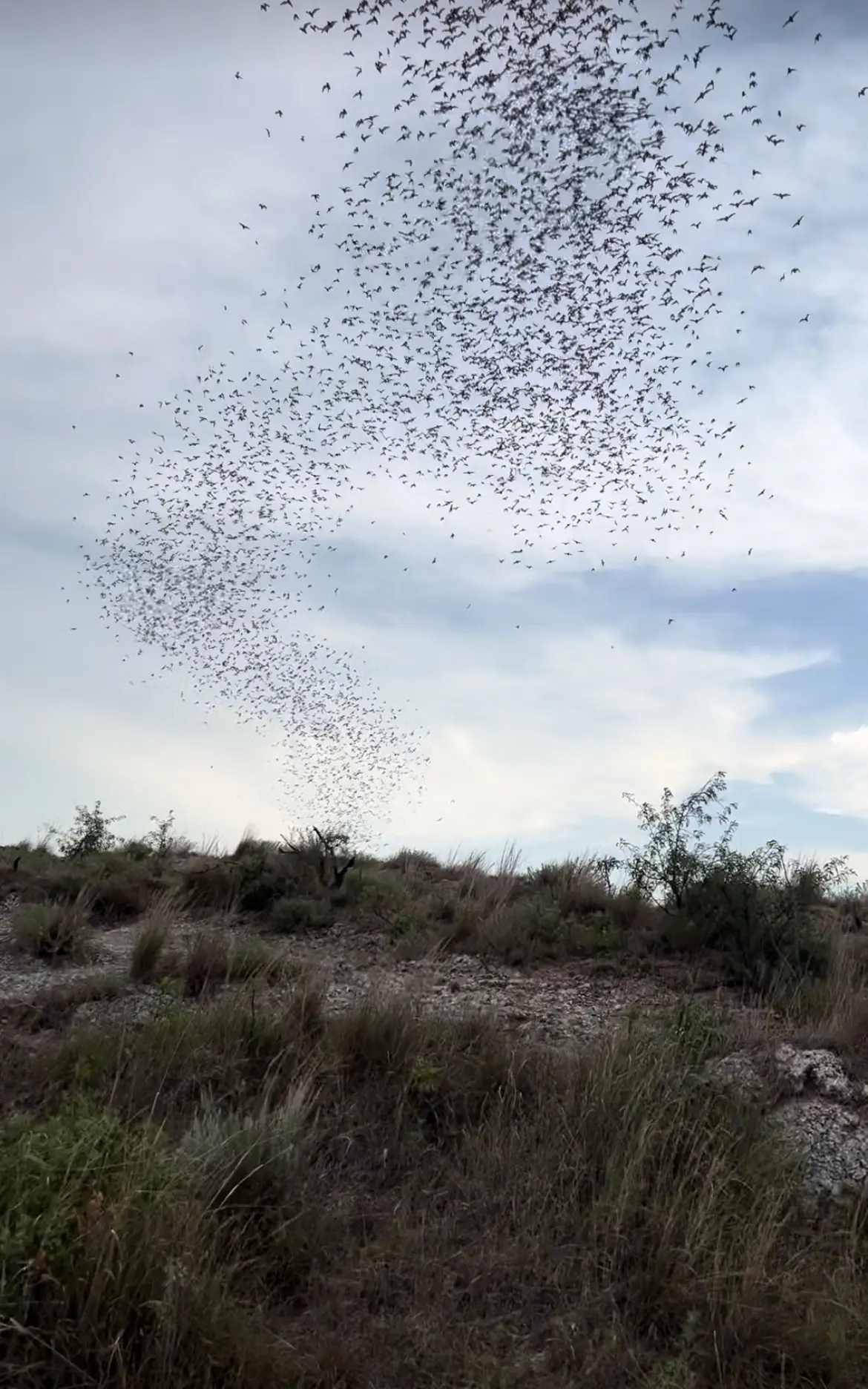
Image of bats in migration from field site. Photo credit: Kristin Dyer.
The Powe Award is designated for emerging faculty members who are in the first two years of their tenure track and work in a STEM discipline. Each year, ORAU selects recipients. As one of the 2023 winners, Becker used his $10,000 seed money to purchase the microchips they implant in the bats and a receiver for the cave where the bats roost. This equipment helps him monitor the movement of the bats including when the animals migrate.
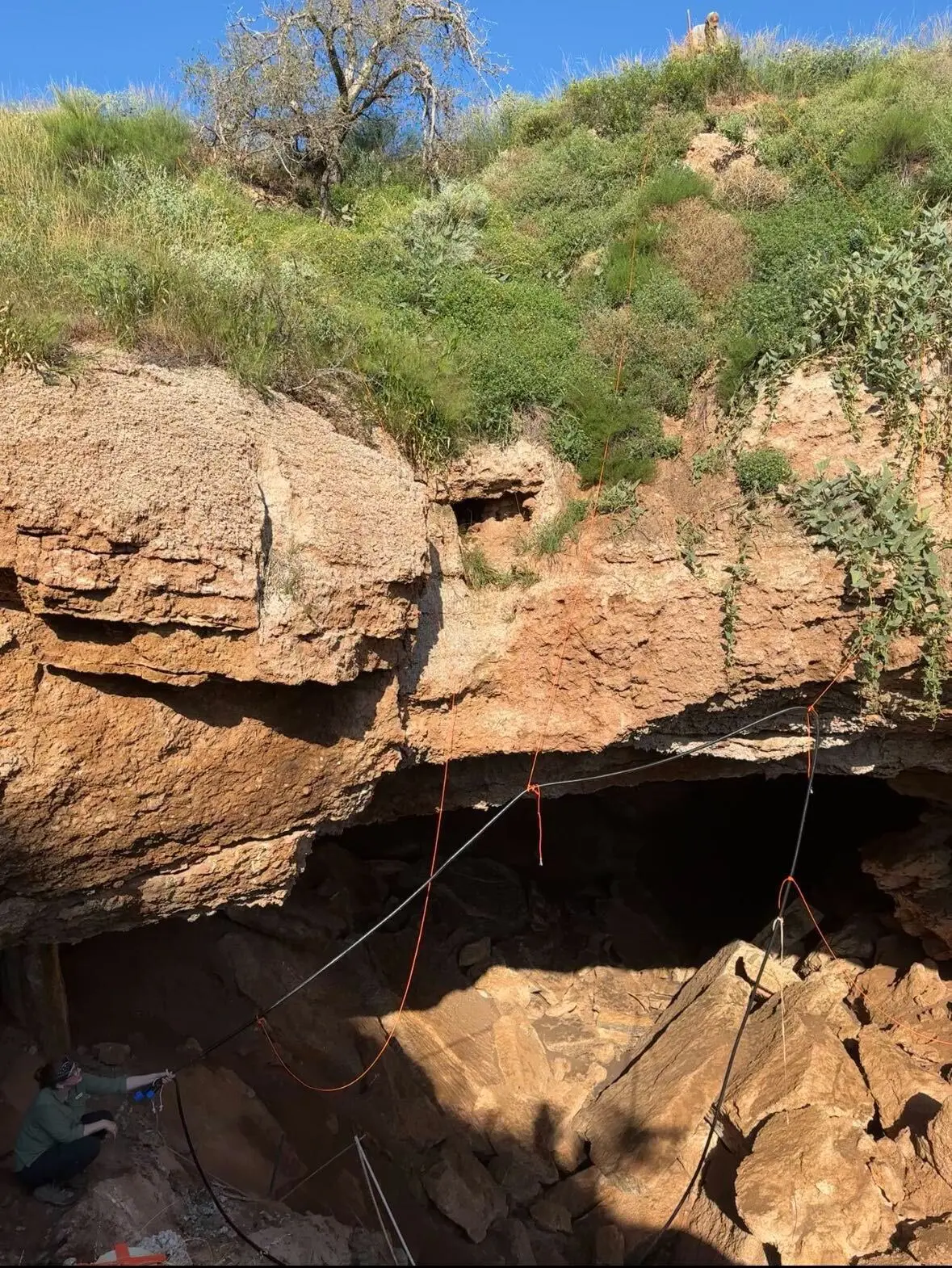
Becker’s team installs Passive Integrated Transponders, or PIT tags, at the bats’ cave entrance. Those are tracking tags that do not require power. Photo credit: Meagan Allira.
Because of deforestation and weather patterns, there is more bat-human interaction today than in previous generations. Becker wants to help scientists predict which bats and which bat-borne viruses are likely to infect humans through cross-species transmission. “There is a lot of interest right now in what bats are doing and how wildlife health impacts human health,” Becker said. “It’s really great to have this kind of work recognized by a competitive pool and know that your research trajectory is on a good path.”
Since the Powe award program’s inception 34 years ago, ORAU has given 910 grants totaling more than $4.55 million to fund and enhance young researchers’ professional growth. Including the matching funds from member institutions, ORAU has facilitated grants worth more than $9 million.
Growing and evolving
In 2023, ORAU added its first tribal university to the consortium. Navajo Technical University (NTU) in Crownpoint, New Mexico, is the first university established on the Navajo Nation. To enhance the school’s health physics curriculum, we came alongside to offer support and they joined our team as an associate member.
The addition of Navajo Technical University brings new perspectives to the consortium. It also opens the door for new partnerships to be formed to drive new opportunities to address the needs of the next generation STEM workforce.
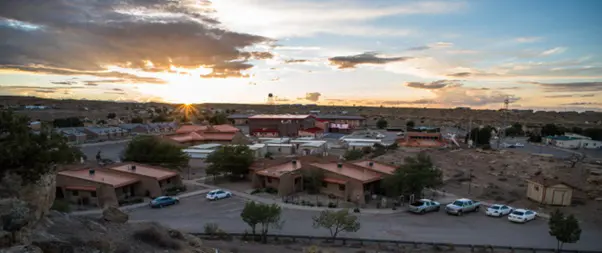
Navajo Technical University campus in Crownpoint, New Mexico. Photo credit: NTU
By pulling together university members from different regions, assets, specialties, thought leadership and capabilities, our team is on mission to find new opportunities and strengthen STEM capacity, and thus, our economy.
We’re looking forward to seeing the fruit from our first partnership with a federal education institution as the Air Force Institute of Technology joins us this year.
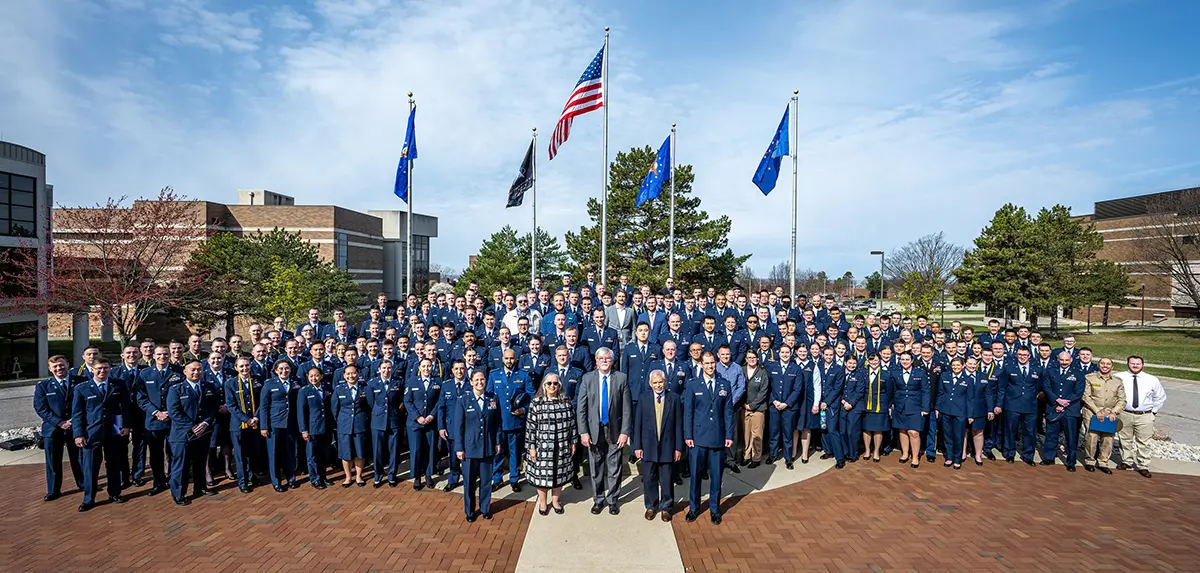
The Air Force Institute of Technology’s Graduate School of Engineering and Management. Photo credit: U.S. Air Force, Photo by Daniel Peterson
University members can also partner with the ORAU STEM Accelerator (OSA) to help strengthen America’s global leadership in STEM through research, education and training, and STEM capacity building. OSA seeks to be a catalyst with academia, industry, non-profits and other stakeholders to improve the capability and capacity of the U.S. STEM workforce in a globally competitive environment. Because ORAU is in Oak Ridge, and Oak Ridge has a rich history in nuclear energy, this is a discipline we care about very much. So, we decided to look specifically at the nuclear energy field and how to alleviate the workforce challenges associated within this area. OSA tapped 10 of our consortium members as well as representatives from community colleges, technical schools, professionals, government members and research labs to create a formula to improve the workforce pipeline for nuclear energy generation.
There are many advantages of becoming an ORAU consortium member, including exclusive opportunities for faculty and students through grant programs and research collaborations between ORAU subject matter experts and other member universities. Through partnerships with ORAU, our consortium members are able to work with government agencies, national laboratories, and private industry on projects that advance scientific research and education.
ORAU’s on-going conversations and analysis of our members’ capabilities translates into an understanding of the kinds of research and projects leaders at our member universities want to be involved with. Coupled with ORAU’s capabilities and rich history of promoting excellence in science, health and education, the university consortium and the work of the Research and University Partnerships Office will continue to be pivotal to advancing scientific research and other critical missions.